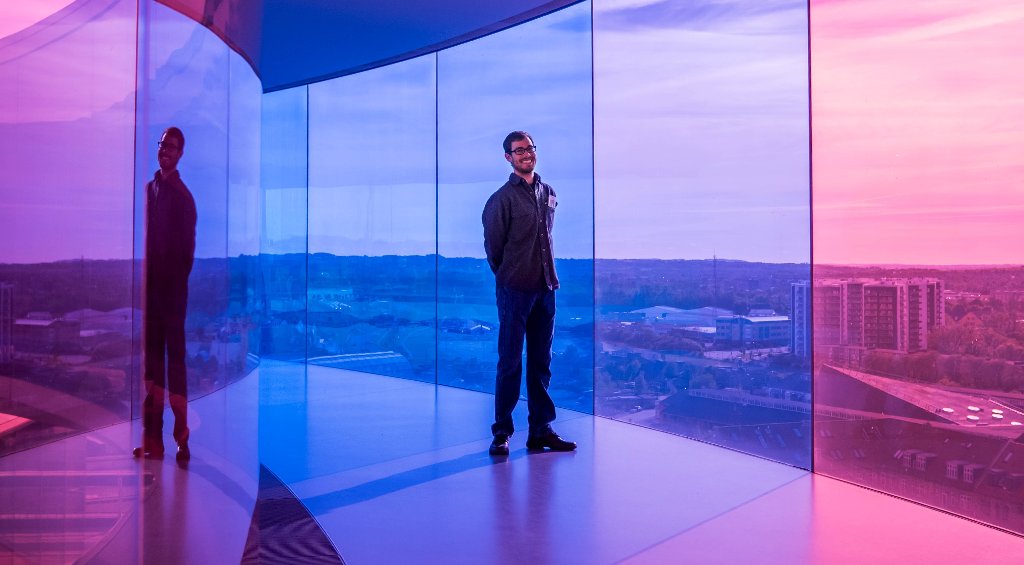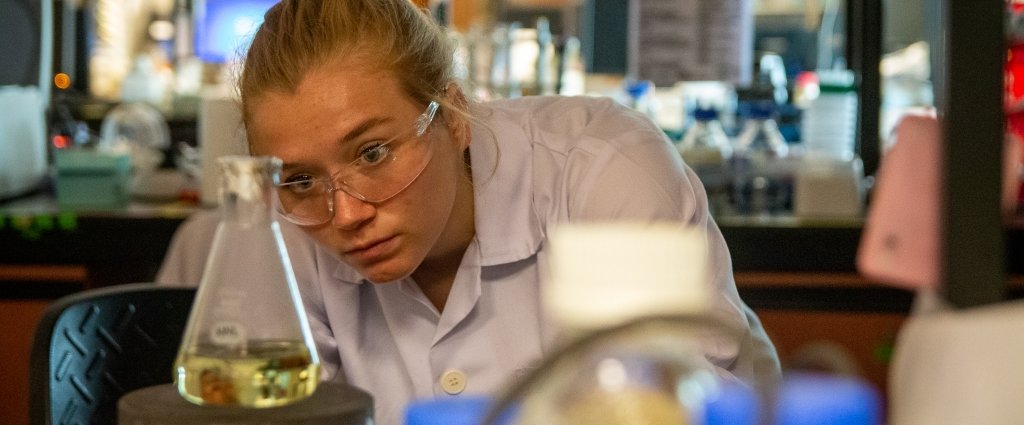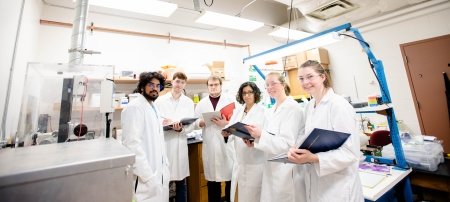This International Research Experience for Students (IRES) program focuses on developing interdisciplinary teams to meet the global challenges of health research.
Specifically, the students are funded by the National Science Foundation (NSF) to look at biosensor technology and how it can be used in point-of-care devices to diagnosis diseases like tuberculosis or malaria. The students in the program will spend eight weeks in the Department of Molecular Biology at Aarhus University in Denmark.
Caryn Heldt, James and Lorna Mack Chair in Bioengineering and associate professor of chemical engineering at Michigan Technological University, is the lead researcher on the IRES Denmark project. She will gather a new cohort each year for the next three years to continue the project, which contributes to existing research collaborations she pursues to create microdevices for disease detection.
"Improved point-of-care disease detection will improve health care around the world, especially in developing countries," Heldt says. "This opportunity for US students to work in another country will bring insight not only to their studies, but to a different worldview than they may have experienced in the US."

Building Global Teams
Teamwork may be a familiar classroom concept, but pulling together effective international and interdisciplinary research teams cannot be learned in a textbook. Through IRES Denmark, the students get real life lab experience in translational research that takes basic science and starts to hone it for clinical use.
The students themselves—six total this year from Michigan Tech, University of Detroit Mercy, Purdue University and University of Virginia—all have different backgrounds. Five are STEM students, all in the life science and engineering, and one is a member of the CinOptic Media Enterprise team, who will help produce a video of the team's efforts this summer. They will also send out updates on Twitter, Instagram and Facebook.
"Effectively communicating research to the public—as well as within and across scientific and engineering disciplines—is vital to its success," says Erin Smith, director of Humanities Digital Media at Michigan Tech, who will help the students learn about science communication best practices and video production. " With someone on the team dedicated to communication, we have a great opportunity to tell an important story about the value of interdisciplinary, international research for undergraduates and to foreground the significance of communication in these endeavors."
Building Biosensors
The students are taking on small parts of the project; they will then work together as a whole team to integrate what they learn during their stay at Aarhus University. They will be working on genetic and enzymatic biomarker determination and evaluation of biomarkers, which relate to the engineering, biological and clinical aspects of the project respectively.

Bianca Jones, a biochemistry major from University of Detroit Mercy, and Cameron Miller, a chemical engineering major from Michigan Tech, will be working together on the biosensors used in microdevices.
"It's like Pac Man, we're searching through the body looking for these biomarkers," Jones says. "And once we find it—waka waka waka—we can analyze it and figure out the limitations of each biomarker."
Miller agrees the process is like a complicated game of Pac Man and explains the goal of their project is to expand what diseases are detectable with the biosensors by looking at different biosensor designs, ranging from quantum dots to noble metal-based nanoclusters.
DNA Thermometer
Hannah Cunningham, a biomedical engineering major at Michigan Tech, says she is most excited by the cleverness of the project she's working on.

"After a certain point, you reach a temperature where DNA starts to fall apart," Cunningham says. "We can attach a fluorescent probe so that as the DNA starts to fall apart, it lights up, and at a given temperature, the sample should have a given brightness."
The ultimate goal of the project is to use DNA as a temperature gauge in circuits, bringing a level of precision to nanothermometers embedded in a microdevice.
Gene Repair
The last pair of students will focus on learning about the effects of certain cancer therapies and specifically how the enzyme topoisomerase cleaves DNA, a process that prevents tumor cells from reproducing.

Anna Mendelson, a biochemistry major from the University of Virginia, and her lab partner, Jacob Crislip, a chemical engineering major from Purdue University, will be prepping yeast cells.
"We're making a modeling system to better predict when this enzyme interaction fails," Mendelson says, "then we can start to dig into why and how to prevent those failures."
Crislip adds that the research group at Aarhus they're working with is pioneering studies on monitoring the gene repair process related to topoisomerase and DNA interactions.
"Being able to see how another culture approaches research, how they practice science, is a really valuable experience," he says. "International paid research - three of my favorite things!"
Science Abroad
By studying nanoscale processes and making global connections, the IRES Denmark cohort can help build the solutions to improve disease detection and treatment.

As those solutions develop, the results need to shared out. That's why Taran Schatz is part of the team. As a sound design major who started off in STEM, Schatz is particularly interested in sharing the behind-the-scenes work of lab research.
"It’s exciting to do something that’s across disciplines; most of what I’ve been doing is not with the science community," he says. "With this, I’m coming back to the science."
Michigan Technological University is an R1 public research university founded in 1885 in Houghton, and is home to nearly 7,500 students from more than 60 countries around the world. Consistently ranked among the best universities in the country for return on investment, Michigan's flagship technological university offers more than 185 undergraduate and graduate degree programs in science and technology, engineering, computing, forestry, business, health professions, humanities, mathematics, social sciences, and the arts. The rural campus is situated just miles from Lake Superior in Michigan's Upper Peninsula, offering year-round opportunities for outdoor adventure.






Comments